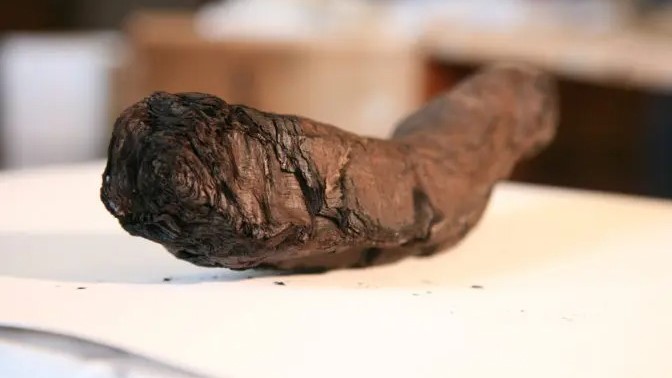Forget gaming, an NVIDIA GTX GPU just earned $40,000 for translating a single word
The charred Herculaneum scrolls are the apple of AI enthusiasts' eyes.

What you need to know
- A computer science student deciphered a single word from the Herculaneum scrolls using AI.
- The model was trained on an NVIDIA GeForce GTX 1070.
- The Herculaneum scrolls are heavily charred, making them almost impossible to decipher.
The NVIDIA 1070 may not be one of the best graphics cards anymore, but it managed to earn one scientist $40,000. Luke Farritor, a computer science undergrad at University of Nebraska-Lincoln and former SpaceX intern, used the graphics card to decipher ancient Roman scrolls, which earned him a pretty penny for completing the Vesuvius Challenge. Nat Friedman, the CEO of GitHub, organized the challenge to drive historical breakthroughs using technology.
The Herculaneum scrolls look more like a piece of ash than ancient scrolls, which is exactly the problem. The artifact is so heavily damaged that it's practically impossible to read. X-rays provide some insight, but the resulting images are difficult to interpret due to the ink on the Herculaneum scrolls appearing similar to the burned pages.
Farritor trained an AI model with an GTX 1070 to detect "crackle patterns" that show where ink used to be. NVIDIA shared a blog post on the discovery and Tom's Hardware provided further insight.
The AI model deciphered the word πορφυρας (or porphyras) which means either "purple" or purple dye used in clothing. Discovering that word alone earned Farritor $40,000.
Looking at the charred remains of the Herculaneum scrolls, it's impressive that anything of value can be deciphered. Others have earned smaller prizes of $10,000 for confirming the appearance of πορφυρας (or porphyras) and demonstrating that "significant amounts of ink were waiting to be discovered within the unopened scrolls," as explained by NVIDIA.
Now that a single word has been deciphered, the next challenge is to find passages that are 144 characters long. That figure was chosen to match the original length of a tweet, though X (formerly Twitter) now allows longer posts. Anyone who retrieves four distinct passages from the scrolls will earn a prize of $700,000.
All the latest news, reviews, and guides for Windows and Xbox diehards.

Sean Endicott is a news writer and apps editor for Windows Central with 11+ years of experience. A Nottingham Trent journalism graduate, Sean has covered the industry’s arc from the Lumia era to the launch of Windows 11 and generative AI. Having started at Thrifter, he uses his expertise in price tracking to help readers find genuine hardware value.
Beyond tech news, Sean is a UK sports media pioneer. In 2017, he became one of the first to stream via smartphone and is an expert in AP Capture systems. A tech-forward coach, he was named 2024 BAFA Youth Coach of the Year. He is focused on using technology—from AI to Clipchamp—to gain a practical edge.

